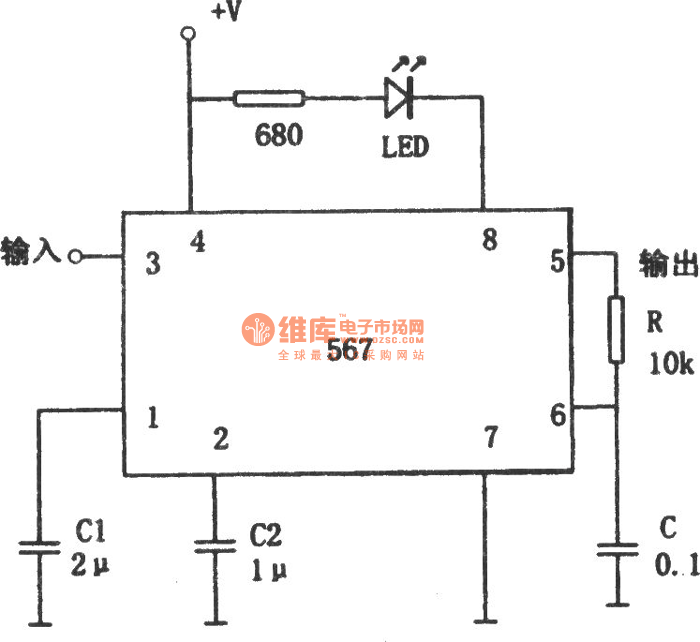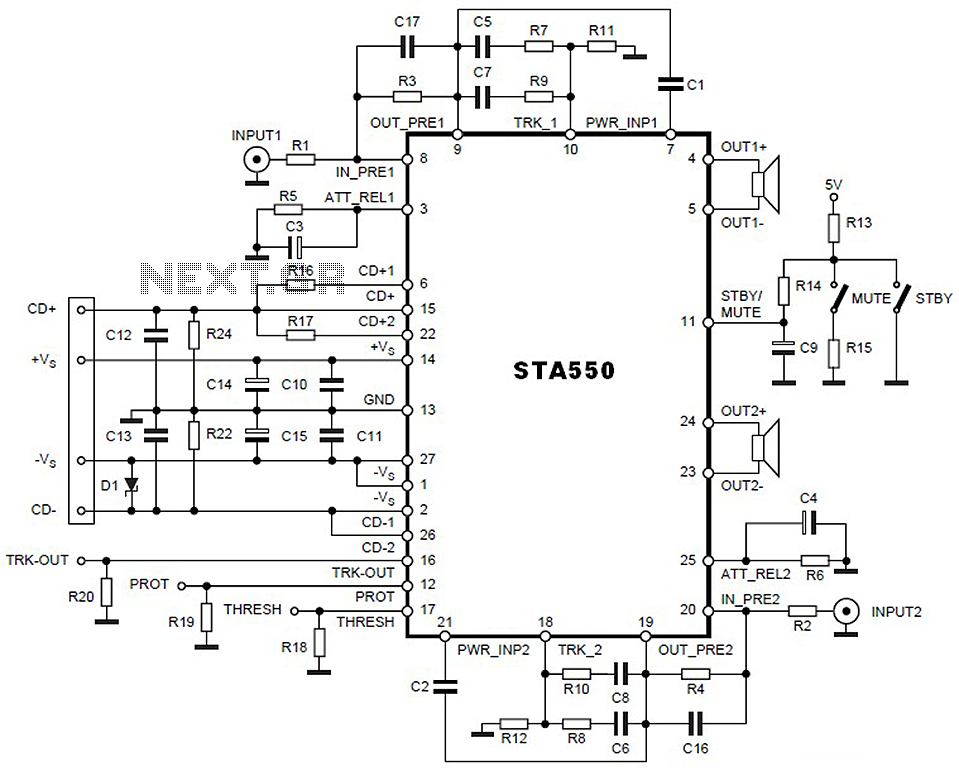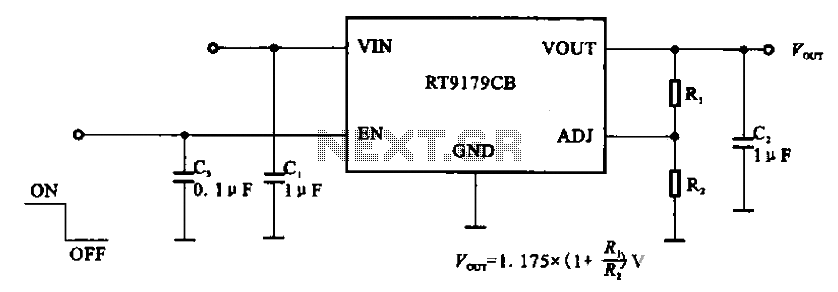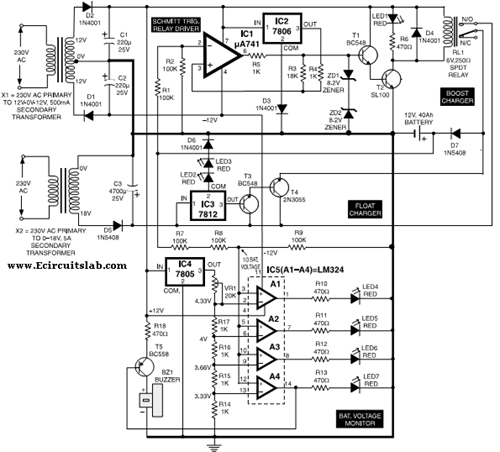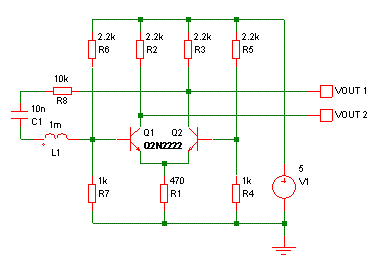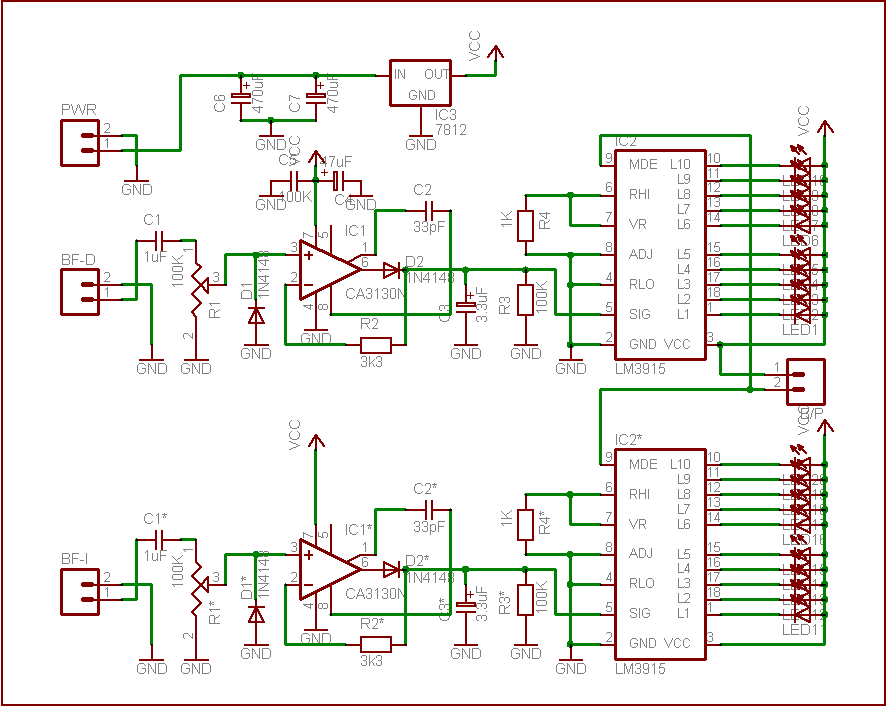
Circuit diagram of a modulator circuit in a transmitter and receiver of a amplitude modulation
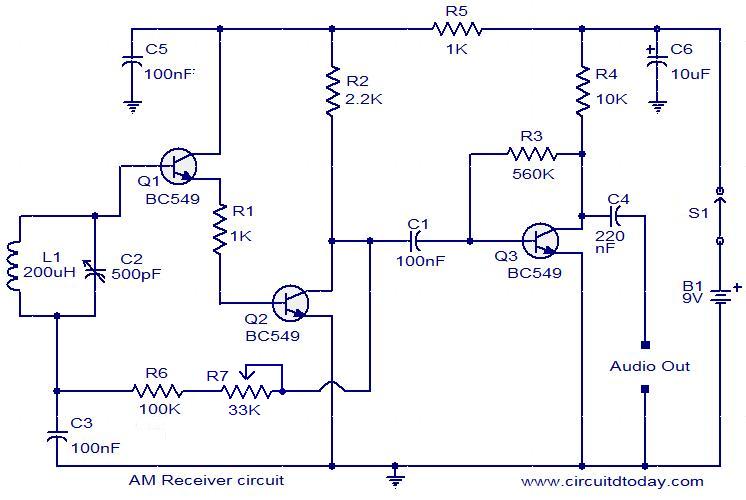
Circuit diagram of a modulator circuit in a transmitter and receiver of amplitude modulation.
The modulator circuit in an amplitude modulation (AM) transmitter and receiver plays a crucial role in the process of encoding information onto a carrier wave. In a typical AM system, the modulator combines the audio signal (the baseband signal) with a high-frequency carrier wave. This process results in a modulated signal that can be transmitted over long distances.
The basic components of an AM modulator circuit include a carrier oscillator, which generates a high-frequency sine wave, and a mixer or modulator stage, where the audio signal is combined with the carrier wave. The output of the modulator is an amplitude-modulated signal, where the amplitude of the carrier wave varies in accordance with the instantaneous amplitude of the audio signal.
In a transmitter, the modulated signal is then amplified using a power amplifier before being transmitted through an antenna. The antenna radiates the modulated carrier wave into the atmosphere, allowing it to travel to the receiver.
On the receiving end, the process is reversed. The receiver captures the transmitted signal using its antenna, and the incoming signal is fed into a demodulator circuit. The demodulator extracts the original audio signal from the modulated carrier wave. This is typically done using a diode detector or a synchronous demodulator, which retrieves the audio signal by rectifying the modulated signal and filtering out the carrier frequency.
The circuit diagram of the modulator typically includes the following elements:
1. **Carrier Oscillator**: Generates the high-frequency carrier wave.
2. **Audio Input Stage**: Accepts the audio signal to be transmitted.
3. **Mixer/Modulator**: Combines the audio signal with the carrier wave.
4. **Output Stage**: Provides the modulated signal to the power amplifier.
5. **Power Amplifier**: Boosts the modulated signal for transmission.
6. **Antenna**: Radiates the modulated signal into the environment.
In summary, the modulator circuit is essential for transforming the audio information into a form suitable for wireless transmission, enabling effective communication over radio frequencies.circuit diagram of a modulator circuit in a transmitter and receiver of a amplitude modulation. 🔗 External reference
The modulator circuit in an amplitude modulation (AM) transmitter and receiver plays a crucial role in the process of encoding information onto a carrier wave. In a typical AM system, the modulator combines the audio signal (the baseband signal) with a high-frequency carrier wave. This process results in a modulated signal that can be transmitted over long distances.
The basic components of an AM modulator circuit include a carrier oscillator, which generates a high-frequency sine wave, and a mixer or modulator stage, where the audio signal is combined with the carrier wave. The output of the modulator is an amplitude-modulated signal, where the amplitude of the carrier wave varies in accordance with the instantaneous amplitude of the audio signal.
In a transmitter, the modulated signal is then amplified using a power amplifier before being transmitted through an antenna. The antenna radiates the modulated carrier wave into the atmosphere, allowing it to travel to the receiver.
On the receiving end, the process is reversed. The receiver captures the transmitted signal using its antenna, and the incoming signal is fed into a demodulator circuit. The demodulator extracts the original audio signal from the modulated carrier wave. This is typically done using a diode detector or a synchronous demodulator, which retrieves the audio signal by rectifying the modulated signal and filtering out the carrier frequency.
The circuit diagram of the modulator typically includes the following elements:
1. **Carrier Oscillator**: Generates the high-frequency carrier wave.
2. **Audio Input Stage**: Accepts the audio signal to be transmitted.
3. **Mixer/Modulator**: Combines the audio signal with the carrier wave.
4. **Output Stage**: Provides the modulated signal to the power amplifier.
5. **Power Amplifier**: Boosts the modulated signal for transmission.
6. **Antenna**: Radiates the modulated signal into the environment.
In summary, the modulator circuit is essential for transforming the audio information into a form suitable for wireless transmission, enabling effective communication over radio frequencies.circuit diagram of a modulator circuit in a transmitter and receiver of a amplitude modulation. 🔗 External reference
